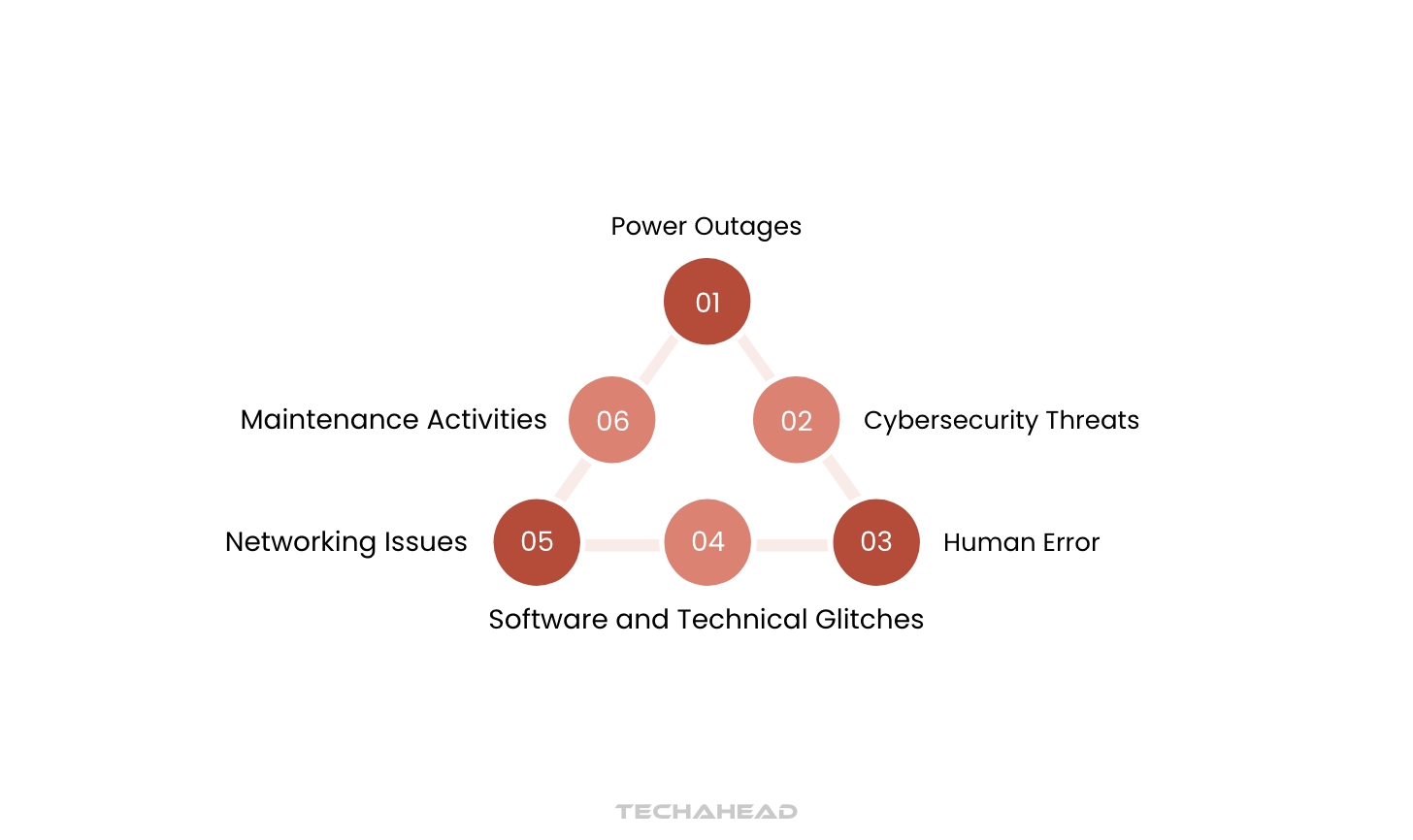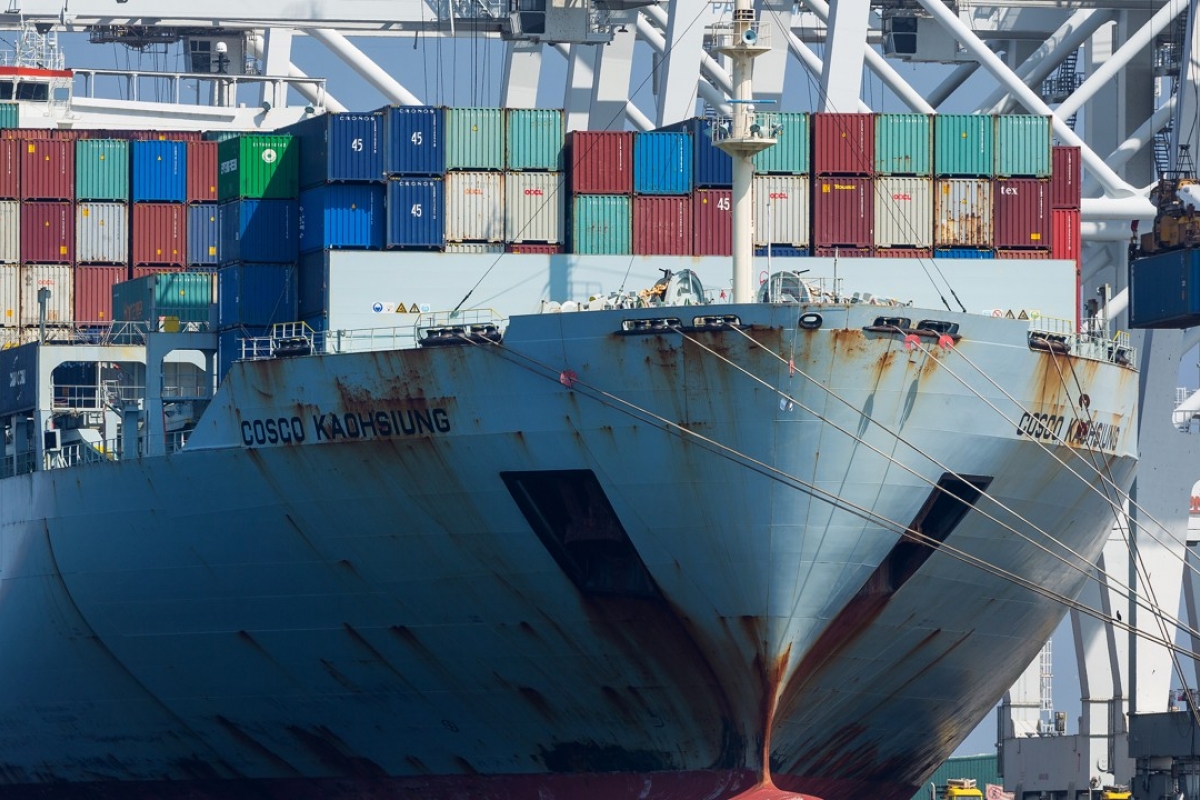The Growing Problem Of Air Traffic Control Outages: Causes And Consequences

Table of Contents
Technological Failures Contributing to Air Traffic Control Outages
Outdated technology and insufficient investment in modernizing air traffic control (ATC) infrastructure are major contributors to system failures. The reliance on aging systems lacking sufficient redundancy leaves the entire system vulnerable to even minor glitches.
- Lack of Redundancy: Many ATC systems lack the backup systems necessary to seamlessly handle failures. A single point of failure can cascade into a widespread outage.
- Aging Systems: Decades-old hardware and software are prone to malfunctions and are increasingly difficult to maintain and repair.
- Insufficient Investment in Modernization: Lack of adequate funding for upgrading technology prevents the implementation of more robust and reliable systems.
- Cybersecurity Vulnerabilities: Outdated systems are often vulnerable to cyberattacks, which can cripple ATC operations and compromise safety.
Software glitches and system failures also play a significant role. The complexity of modern ATC systems makes troubleshooting extremely challenging, often leading to extended downtime.
- Software Bugs: Unforeseen errors in software code can trigger system crashes, requiring extensive debugging and potentially causing widespread disruptions.
- System Integration Issues: Integration problems between different ATC systems can lead to communication failures and operational disruptions.
- Difficulties in Troubleshooting: The intricate nature of modern ATC systems makes identifying and resolving software issues a complex and time-consuming process.
Finally, human error in managing and maintaining these technological systems cannot be overlooked.
- Inadequate Training: Insufficient training for personnel responsible for maintaining and operating ATC systems can lead to mistakes that exacerbate existing vulnerabilities.
- Insufficient Error Detection Mechanisms: Lack of robust error detection and prevention mechanisms allows minor problems to escalate into major system failures.
- Pressure to Meet Operational Targets: Pressure to maintain operational efficiency can lead to shortcuts that compromise safety and increase the risk of errors.
Human Factors in Air Traffic Control Outages
Beyond technological issues, human factors significantly contribute to air traffic control outages. Staffing shortages and high workloads are pervasive problems, leading to controller burnout and increased error rates.
- Understaffing and Burnout: Chronic understaffing forces controllers to work excessive hours, leading to fatigue, stress, and reduced performance.
- Inadequate Support Systems: Lack of sufficient support staff and resources can overwhelm controllers and increase the risk of human error.
Training and communication breakdowns also play a crucial role. Inconsistent training procedures and poor communication between controllers and pilots create safety risks.
- Lack of Standardized Training: Variations in training procedures across different ATC facilities can lead to inconsistencies in performance and increase the likelihood of errors.
- Communication Failures: Misunderstandings or communication breakdowns between air traffic controllers and pilots can have serious consequences.
- Poor Coordination: Insufficient coordination between different ATC facilities can lead to confusion and delays, increasing the risk of accidents.
Fatigue and stress significantly impact controller decision-making. Long working hours and irregular shift patterns can impair cognitive function and increase the risk of errors.
- Long Working Hours: Extended shifts can lead to fatigue and reduced alertness, affecting controllers' ability to handle complex situations.
- Irregular Shift Patterns: Disrupted sleep schedules can negatively affect cognitive function and increase the likelihood of errors.
- High-Pressure Environment: The pressure of managing complex airspace and ensuring passenger safety can lead to stress and burnout.
Consequences of Air Traffic Control Outages
Air traffic control outages have severe consequences, impacting flight operations, passenger safety, and the broader economy. The most immediate impact is on flight delays and cancellations.
- Flight Delays and Cancellations: Outages lead to widespread delays and cancellations, causing significant inconvenience for passengers and substantial financial losses for airlines.
- Economic Losses: Airlines incur heavy losses due to cancelled flights, fuel costs, and compensation payments to affected passengers.
- Passenger Disruption: Delays and cancellations disrupt travel plans, causing significant inconvenience and frustration for passengers.
ATC outages also present serious safety risks. The lack of effective control increases the potential for accidents.
- Increased Risk of Collisions: Loss of air traffic control can increase the risk of mid-air collisions, with potentially catastrophic consequences.
- Runway Incursions: Without proper coordination, aircraft may inadvertently enter runways occupied by other aircraft, leading to serious incidents.
- Emergency Handling Challenges: ATC outages can hinder the effective management of emergencies, making it more difficult to respond to crises.
The broader economic consequences are substantial, extending beyond the aviation industry.
- Impact on Tourism: Disruptions to air travel significantly impact the tourism industry, leading to lost revenue and economic hardship.
- Trade and Business Travel: ATC outages disrupt international trade and business travel, affecting economic activity and global supply chains.
- Ripple Effects on Related Industries: The impact of ATC outages extends to various related industries, including hospitality, transportation, and logistics.
Solutions and Mitigation Strategies for Air Traffic Control Outages
Addressing the growing problem of air traffic control outages requires a multi-pronged approach encompassing technological upgrades, improved workforce management, and enhanced collaboration. Technological modernization is crucial.
- NextGen ATM Systems: Investing in NextGen air traffic management systems can improve efficiency and resilience.
- Robust and Redundant Systems: Implementing more robust and redundant systems can minimize the impact of individual system failures.
- Improved Cybersecurity Measures: Strengthening cybersecurity defenses can protect ATC systems from cyberattacks.
Improvements in workforce management and training are essential to reduce human error.
- Addressing Staff Shortages: Increasing staffing levels and improving compensation and benefits can attract and retain qualified air traffic controllers.
- Enhanced Training Programs: Implementing comprehensive and standardized training programs can improve controllers' skills and knowledge.
- Stress Management Strategies: Implementing effective stress management strategies can help controllers cope with the demanding nature of their work.
Increased collaboration and information sharing are also vital.
- Improved Communication: Enhancing communication between different ATC facilities and between controllers and pilots is crucial.
- Coordination with Airlines: Better coordination with airlines can help mitigate the impact of ATC outages on flight operations.
- Data Sharing: Sharing data between different ATC facilities and with airlines can enhance situational awareness and improve decision-making.
Conclusion: Addressing the Growing Problem of Air Traffic Control Outages
Air traffic control outages are a growing concern with severe consequences for air travel safety, efficiency, and the global economy. The root causes are multifaceted, involving outdated technology, human factors, and systemic vulnerabilities. The resulting flight delays, cancellations, and safety risks have significant economic and social impacts. Addressing this challenge requires immediate action. We must invest in modernizing ATC systems, improve workforce management and training, and enhance collaboration between all stakeholders. Preventing future ATC system failures and mitigating the impact of inevitable disruptions requires a concerted effort. Let's work together to ensure safer and more reliable air travel for all, minimizing the impact of future air traffic control outages and their devastating consequences.

Featured Posts
-
 Spectacle Hellfest Une Soiree Au Noumatrouff
May 22, 2025
Spectacle Hellfest Une Soiree Au Noumatrouff
May 22, 2025 -
 Vstup Ukrayini Do Nato Chi Zapobizhit Tse Podalshiy Rosiyskiy Agresiyi
May 22, 2025
Vstup Ukrayini Do Nato Chi Zapobizhit Tse Podalshiy Rosiyskiy Agresiyi
May 22, 2025 -
 Chinese Towers Partial Collapse Triggers Tourist Evacuation
May 22, 2025
Chinese Towers Partial Collapse Triggers Tourist Evacuation
May 22, 2025 -
 Cassis Blackcurrant The Definitive Guide
May 22, 2025
Cassis Blackcurrant The Definitive Guide
May 22, 2025 -
 Avoiding Conflict G 7 And Us Trade Tensions
May 22, 2025
Avoiding Conflict G 7 And Us Trade Tensions
May 22, 2025
